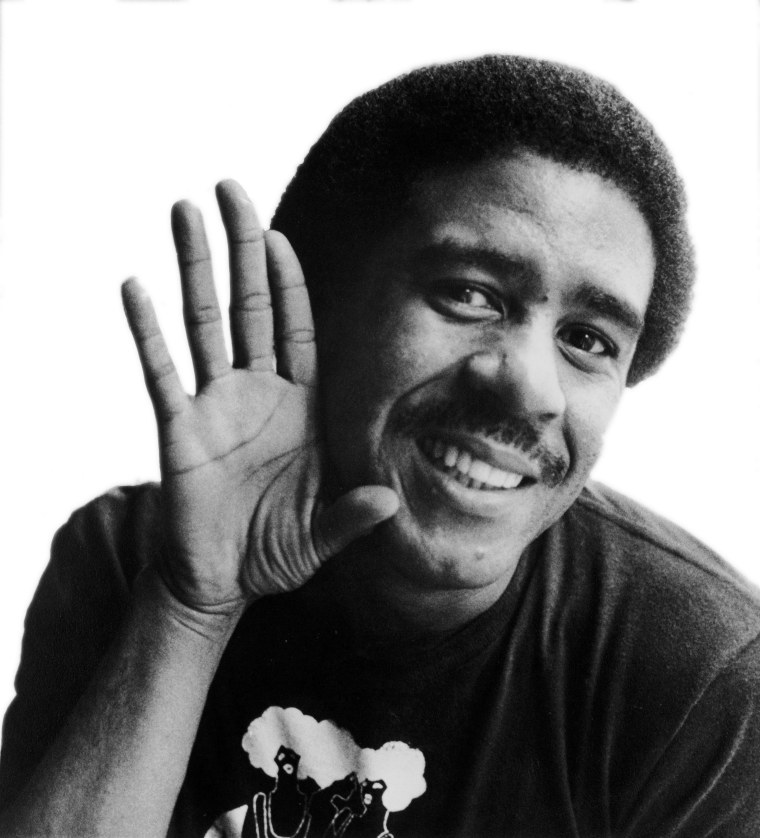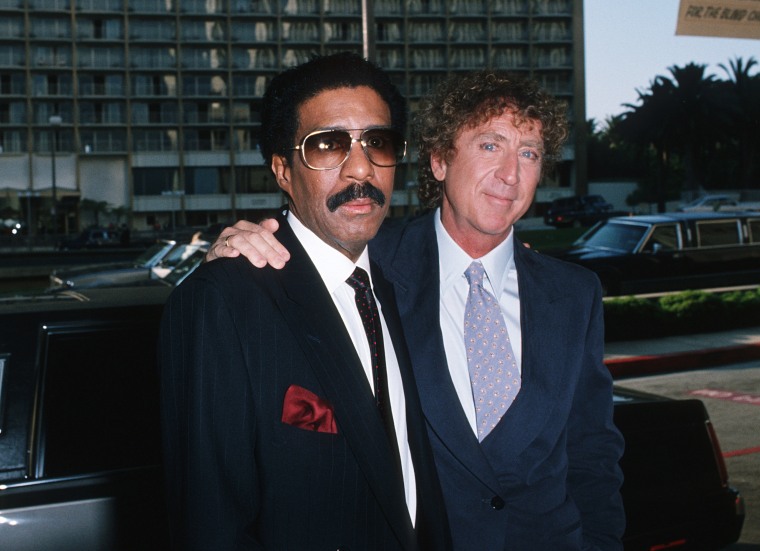The death of beloved comic actor Gene Wilder at age 83 has fans revisiting and reassessing his legendary film career. And while his role in "Willy Wonka and the Chocolate Factory" may be his most iconic and enduring performance, his films opposite Richard Pryor arguably had the biggest commercial impact and influence on the modern cinema landscape.
Forty years ago, Wilder and Pryor first teamed up in their hit riff on Alfred Hitchcock films, "Silver Streak," but their first pairing was actually supposed to be in the iconic western satire "Blazing Saddles," which came out two years earlier.
Pryor co-wrote that screenplay, and director Mel Brooks had always intended that Pryor play Sheriff Bart, the black lawman who forms an uneasy alliance with the prejudiced citizens of the fictional town of Rock Ridge. But the studio wasn't willing to take the risk (at the time) of casting the edgy comic, so actor Cleavon Little formed half of an interracial comedy duo opposite Wilder.
Little and Wilder had great chemistry, but the sparks generated by the "Willy Wonka" star and Pryor were something special. They were the first true mixed-race equals in the big screen comedy genre. While Will Rogers and Stepin Fetchit would appear with each other in four films in the 1930s, the racial bigotry and stereotypes of the time colored those pairings in a less-than-stellar light.
And although Sidney Poitier and Jim Brown would share the screen with white co-leads, they were expected to be exemplars of their culture in a way that Pryor, by 1976, wasn't.
Mia Mask, a professor of film studies at Vassar College, said that the Pryor-Wilder films represent a real "shift" in terms of racial representation in the movies.
"They would openly joke about race in a way that the audience could be a part of," she told NBC News. "They made it safe for mainstream audiences to laugh with them and at them."
The blackface and gay panic jokes that were standouts for Wilder and Pryor may be a little dated now, but there is something timeless about the improvisational nature of their humor, the manic energy of their performances and genuine warmth they appeared to feel toward each other.
"I don't even think I necessarily thought about race, per se, when I was watching them," said African-American Film Critics Association president Gil Robertson. "It was just two good friends who clicked. The timing was just right, and in comedy timing is everything."
Related: 'Sweetness and a comedic grace': Celebs remember 'Willy Wonka' star Gene Wilder
According to Robertson, Wilder and Pryor first encountered each other on the Los Angeles comedy club scene of the early 1970s, and Wilder lobbied producers to cast his colleague in "Silver Streak." Robertson believes that the faith Wilder showed in Pryor, and the success of their first pairings together, helped pave the way to a $40 million production deal Pryor established with Columbia Pictures in 1983, which was unprecedented at the time for a black actor.
Still, off-screen, their relationship was reportedly rocky at best. Wilder often described Pryor as difficult to work with, particularly during his drug-fueled days. Meanwhile, Pryor mocked Wilder's naivete in his stand-up. In a video from 1980 that went viral years later, Pryor derisively questioned his co-star's sexuality.
"People always ask, 'Were Gene Wilder and Dad friends?' I always answered, 'Not really, however they saw each other's genius and created hit films and were the best comedy film friends of all time,'" Rain Pryor wrote on Facebook following the death of Wilder. "They to me, were the antithesis of how chemistry on film doesn't always mean it translates off. Gene was a true grownup and I never saw him party. Dad was younger and we all know, he liked to party. The two together accepted the other."
"However, nothing could beat their magic on screen nor ever will," she added.
On the heels of their success came Eddie Murphy's pairing with Nick Nolte ("48 Hrs.") and Dan Aykroyd ("Trading Places"), the "Lethal Weapon" movies, and more recently the "Rush Hour" films and some Kevin Hart comedies, all of which have wrung laughs out of cultural differences between disparate racial groups.
Related: Gene Wilder dies at 83 — here are 5 of his best movie moments
Wilder and Pryor helped Hollywood realize that there was a financial incentive, in addition to a creative one, to diversify the leads in their mainstream comedies. Today, we take multicultural casting for granted (unless it's in an iconic role first established by a white actor). But in the mid-'70s, Hollywood was far more fragmented -- with black films and predominately white films catering to separate but equal audiences.
Before his breakout films with Wilder, Pryor had been one of the most sought-after stand-up comics in the country, but his Hollywood roles had largely been in blaxploitation pictures with limited appeal. By appearing with Wilder -- at first in "Silver Streak" as more of a sidekick and eventually as an equal -- Pryor elevated his movie star status and became more of a crossover sensation.
By the 1980s, Pryor was the much larger star, and his career arguably had more staying power than Wilder's. Today, Pryor is often referred to as the greatest stand-up comedian ever, and his work in dramas like "Lady Sings the Blues," "Blue Collar" and his classic performance in "Richard Pryor: Live In Concert" are more critically acclaimed than anything he did with Wilder. But their screen friendship has endured in the minds of many fans, even if they weren't as friendly outside of the reel world.

"It was through [Wilder's] work with Pryor that I had given the most attention to him," conceded Robertson, who believes Wilder's willingness to share the spotlight with Pryor did both their careers a service.
"That says a lot about Gene Wilder, the man, there are a lot of actors even to this day who wouldn’t want to share that box office glory with anyone," said Robertson. Their films, and the mixed-race pairings that have followed in their wake, had broad-based demographic appeal, but also a profound subtext, according to Robertson.
"We're more alike than we're not. When you think of some of the critical scenes in "48 Hrs." and the "Rush Hour" films, it was just that simple," he said. "We have more in common than we think."
